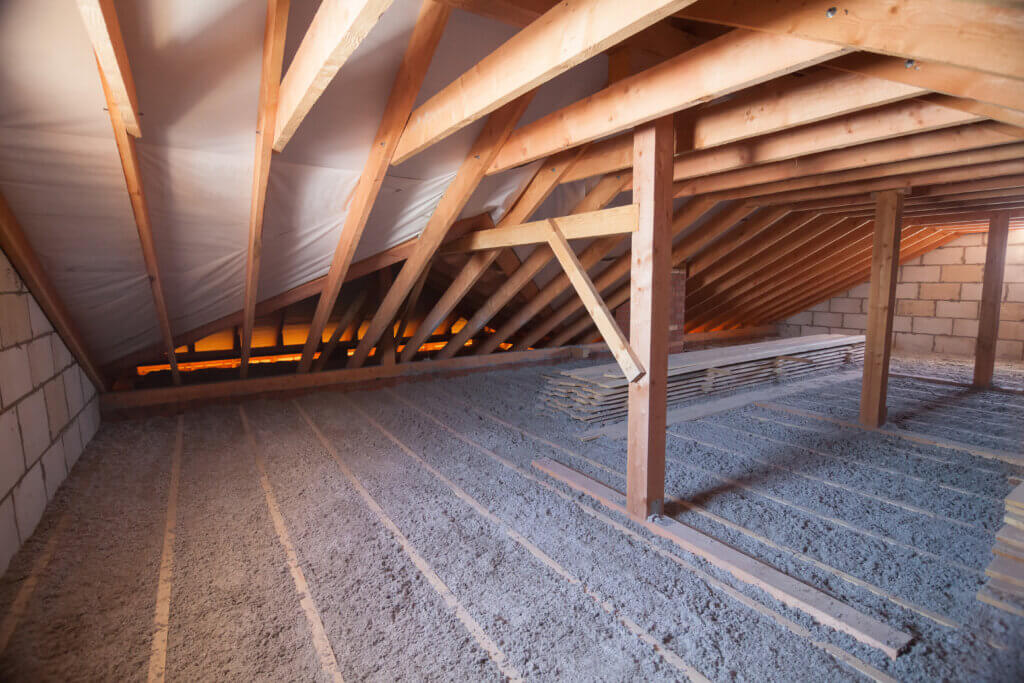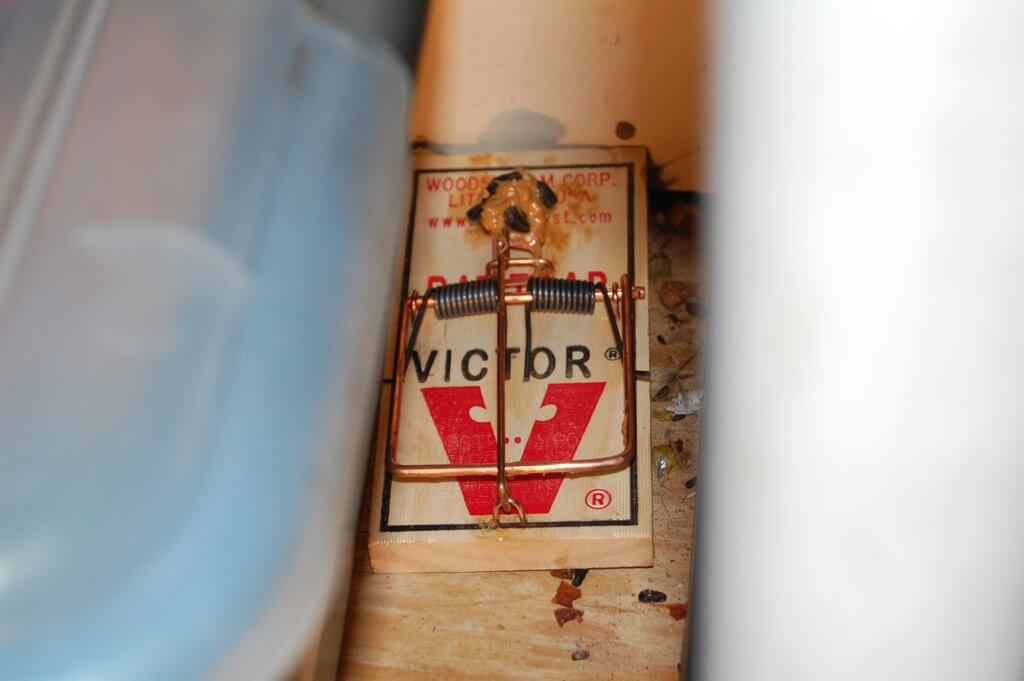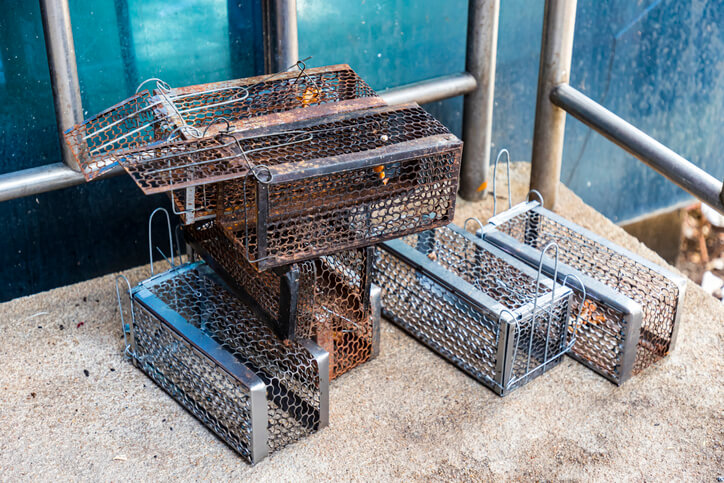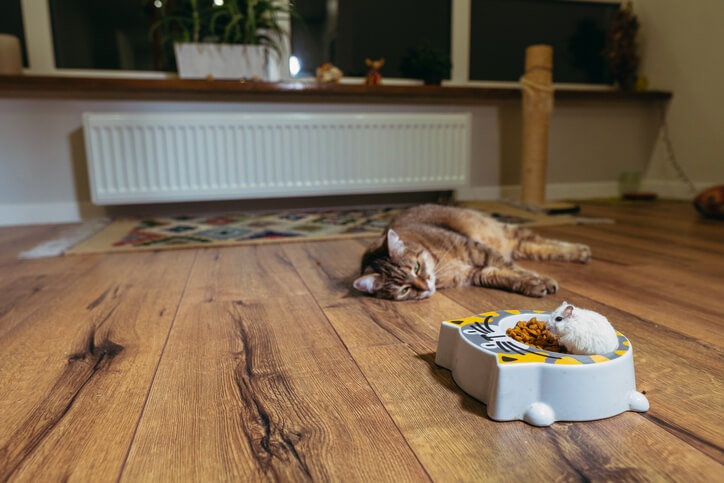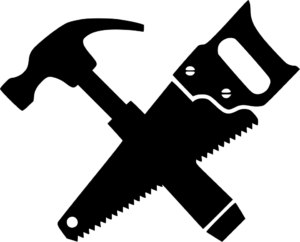Rat Identification
There are two main species of rats commonly found infesting North American homes – the roof rat and the Norway rat. Roof rats, also called black rats, are superb climbers, often inhabiting roofs, attics, walls, cabinets, shrubs, trees, and vegetation. Roof rats gain access to homes through windows and eaves. These rats are darker in color – brown with black spots – and have tails that are longer than their bodies.
Norway rats, also known as brown or sewer rats, burrow in fields and under foundations. These rats like to live in lower levels of buildings and are not as good of climbers as roof rats. Norway rats are the largest of rats, with tails shorter than their bodies.
In general, rats are larger than mice; however, younger rats are often misidentified as mice. Their oversized head and long feet can help quickly identify rats. Rats have teeth marks that are much larger than the marks left behind by mice.
Rat Diets
Rats are not very picky eaters. They are very opportunistic when it comes to finding food. Rats eat everything from other dead animals to fallen fruit and garbage to pet food. When living in residential areas, rats will take advantage of a variety of different food sources. Residential communities offer rats food sources, including pet food, garbage cans, gardens, and scraps from outdoor dining.
Signs of Rats
The most apparent signs there are rats in the home include seeing living or dead rats’ presence. For the most part, rats prefer to stay out of sight; however, some will be spotted in plain sight when the nest is overflowing with rats. Another critical sign of rat infestation is the spotting of rat droppings in cabinets, attics, crawl spaces, and along baseboards. Additionally, rats tend to leave dirt and grease marks on surfaces, such as walls and floorboards, as they scurry throughout the home.
Rat runs, which are tracks left in grass and low vegetation areas, may be present in the yard. Because rats often follow the same path, it may be possible to identify where the nest is and how the rats are getting in the home through these runs.
Other signs rats are present in the home are chew marks on materials, such as plastic and wood. Rats damage these materials trying to gain access to food and shelter and use these materials to build their nests. Keep an eye out for teeth marks, large holes, or shreds of fabric, which is a sign there might be a rat infestation.
Diseases
Rats carry an assortment of diseases that are very harmful to humans and domesticated animals. These diseases get transmitted through contact with the rats, rat bites, and their feces and urine. Some diseases are treatable, while others are quite deadly. Seek medical attention immediately when coming in contact with rats and their droppings to get checked out.
Diseases transmitted by rats include:
Eosinophilic Meningitis. This disease is caused by worms that infect the body, eventually causing a person’s brain issues. The words are found in the rat’s lungs and transmitted to humans as a parasite.
Hantavirus Pulmonary Syndrome. Transmitted through rat waste and can be life-threatening if handled without wearing gloves or masks.
Leptospirosis. Also spread by bacteria, this disease is dangerous to humans and animals. Symptoms include high fever, muscle aches, chills, vomiting, diarrhea, abdominal pain, and vomiting. If symptoms continue, seek medical attention because this disease can lead to severe complications, including liver failure, kidney damage, meningitis, and respiratory disease.
Rat-Bite Fever – Transmitted through the bacteria in a rat via a bite or scratch. This disease can be transmitted through eating contaminated food. Throw away any food potentially infected by a rat and contact a doctor immediately if bitten or scratched by one.
Salmonella Typhimurium. Like typhoid, this disease is not as severe but can cause serious health problems and symptoms. Symptoms include diarrhea, nausea, vomiting, and severe pain. Symptoms are terrible but only last about seven days and can be deadly among those who have existing health complications or are elderly. Seek treatment immediately when experiencing these symptoms.
Damage
Rats can leave a wake of damage behind them, leaving homeowners dealing with thousands of dollars worth of damage. The diseases left behind by rat’s fur, droppings, and urine cause a biological hazard needing containment, clean up, and restoration. Handling or inhaling particles from rat’s waste cause major health complications and can be deadly. Call for assistance from a rat removal specialist for help and guidance with cleaning up any biohazards caused by the rats.
Building their nests, rats tear apart wood, insulation, and furniture. These pests also chew through electrical wires, creating significant fire hazards in attics and within a home’s walls. Homeowners experience other electrical problems associated with chewed wires, such as malfunctioning appliances, power-related issues, and lighting problems. Repairing damage can be costly, especially if the home catches fire due to chewed wires.
Rats can cause damage to personal items stored in basements, attics, and hidden areas of the home. With rat infestations, items in storage become contaminated by feces, covered in urine, chewed through, and destroyed. Call for an exterminator for help at the first signs of rats to reduce the chances of personal items, food, and other household items becoming contaminated.
Access Into the Home
Rats are smart creatures and use the tiniest of access points to get inside a home. Knowing how rats gain access into a home is essential to eliminating a rat infestation. To find access points conduct a thorough inspection of the home’s structure. Check the roof, plumbing, vents, eaves, AC chases, and chimneys. Check even the tiniest of entry points, which can be made larger by a rat gnawing on surrounding materials. Inspect attics and crawl spaces for droppings, gnawed pipes, destroyed insulation, and chewed wires. These signs of rat infestations may lead to the entry point the rats are using to get into the home.
Rats are very agile climbers, making it possible for them to climb up into attics and access some of a home’s most remote locations. Surfaces such as porous walls, bricks, tree bark, and vines offer plenty of rats’ climbing opportunities. Though these pests can climb most surfaces, they are unable to scale glass or smooth interior walls. Additionally, rats can jump pretty high, which helps them get into some remote locations in a structure. Prevent rats from jumping and climbing by keeping clutter away from walls and eliminating any potential climbing surfaces into the home.
Inspection Safety Concerns
Rats do not always hang out or hide on the first floor of buildings. A ladder or climbing on a roof is often necessary when inspecting a home for rat activity. Use caution when climbing a ladder or scaling a roof looking for entry points. To prevent exposure to deadly diseases from rat feces and urine, use a respirator when inspecting small spaces such as attics and crawl spaces. If unsure about the structure’s safety, consult a rat removal specialist to do the dirty work involved in locating entry points.
Entry Points
Once the entry points are identified, it is time to seal them all up. Sealing entry points first helps prevent rats from getting back into the home during the rat removal process. Place wire cages over vents and chimneys. Board up any holes or gaps in the house’s siding and seal gaps between pipes, ventilation ducts, and siding. Depending on the number of entry points, it might be best to hire a pest control company or general contractor to complete the repairs.
DIY or Hire Help
Dealing with rats is something homeowners can do on their own. However, rat infestations can quickly get out of control, resulting in hiring a rat removal specialist. Rat removal as a DIY project could pose serious health consequences. Additionally, not all home remedies for rat infestations are effective. Rather than waste time seeing if DIY remedies work or put those in the home at risk, call in the professionals.
Hiring Help
A rat infestation is something that must be addressed swiftly. Because of the urgency associated with dealing with rats, some homeowners rush the process and sometimes fail to ensure they are working with a reputable rat removal company. Before signing the contract, ask for more details about the rat removal process and any satisfaction guarantee.
Legitimate extermination and wildlife control specialists are licensed, insured, and have all appropriate paperwork associated with handling rats. Do not be afraid to ask to see these documents and inquire about the company’s experience. If something does not seem right, do not be scared to call a different company for help. In many cases friends, family, or co-workers have experienced rat problems, ask who they used and what they thought about the company. Time allowing, ask for references from the company and verify its rating with the Better Business Bureau.
Rat Removal Costs
The cost to remove rats varies on many factors, including how bad the infestation is and how much repair work is needed. On average, eliminating rats is $55 to $175 for simple removal. For more complex removal, costs can be as high as $900. Contact a local exterminator for a consultation to learn more about the work needed and to request an estimate. When getting an estimate, inquire if the costs include follow up services and any satisfaction guarantee.
Keep in mind, rat removal costs vary by company and are affected by several factors. Removing rats is highly specialized work and requires licensing, insurance, and carries liability risks. Legitimate pest control companies have all the proper paperwork and are prepared for any risks associated with removing rats from a residence. Finding a legitimate company means there is a possibility of paying more in service fees.
Keeping that in mind, remember the saying, “You get what you pay for.” Companies that charge astronomically low prices tend to do bad work. However, this does not mean the amount paid for pest control needs to be high. Conduct some research and find a reputable company with reasonable prices. There is always a company that fits somewhere in the middle of bargain-basement prices and high-end prices.
Extra Costs
Many exterminator companies offer more than just rat removal services. These companies also provide repair work on damages caused by rats, such as drywall and electrical repair. Many of these companies also offer help with exclusion methods. Additional services, such as repair, exclusion services, and follow up appointments are often considered extra costs significantly impacting the final bill.
Infestation Clean Up
It is always best to hire help to professionally clean and repair rat-infested areas. Hiring help is best because cleaning up after rats is a multistep process requiring meticulous attention to detail. However, homeowners wanting to clean up as a DIY project will first want to ensure all rats are out of the house and seal off all entry points. Otherwise, any clean up will be contaminated again once new rats make their way into the home.
The DIY clean up process includes:
1. Open up all windows and doors to completely air out the infested area for at least 30 minutes.
2. Wear a biohazard suit, complete with a HEPA filter mask and gloves.
3. Clear all waste by vacuuming the area, as well as removing and replacing soiled insulation.
4. Thoroughly spray the space with a cleaning product that kills bacteria and any biological debris left behind.
5. Followed by spraying the area with a biodegradable odor eliminator and a strong spray that helps neutralize potentially harmful organic matter.
6. Repeat the process to ensure the entire area is decontaminated.
Cleaning chemicals are available in spray bottles; however, fogging machines offer better decontamination efficiency.
Before decontamination, remove any items that have been in contact with feces or rat urine and toss them. Some things may be able to be saved, but it is best to rid the home of any contaminated items. Please do not enter the area or allow other family members or pets to enter a rat-infested location until after it is thoroughly decontaminated.
Dead Rats
Dead rat carcasses can just as quickly spread disease through contaminating the surrounding area and improper handling. Additionally, dead rats attract scavenger animals in search of food, which can pose various more problems for homeowners. Before handling a dead rat:
1. Spray the rodent and surrounding area with a mixture of bleach and water.
2. Put on gloves (rubber, latex, or vinyl) before picking up the dead rat.
3. Seal tightly in a plastic bag and secure in a second plastic bag.
4. Throw the bag in a covered trash that is emptied regularly.
5. Remove and dispose of the gloves with the plastic bag containing the dead rat. Or if wanting to keep the gloves, soak in bleach and water to ensure gloves are entirely decontaminated. Wash hands thoroughly with soap and water.
Infestation Prevention
The best way to prevent rats from building a nest in a home is to take all necessary precautions to keep the rats out of the house in the first place. Rats are attracted to chaos and clutter. These nuisance creatures enter structures in search of food, water, and shelter. Prevent rats from searching for these items by making the property less attractive to the animals. Start by cleaning up trash and clutter in the yard. Secure all trash bins, sealing them with secure lids.
In the yard, clean up gardens and seal off to limit access for the rats. Clean up trees and bushes, as well as pick up any fallen fruit from the ground immediately. If there is a bird feeder in the yard, keep it out of reach for the rats and pick up any fallen seed.
Inside the home, secure food in metal or glass containers, sealing them with tight-fitting lids. Regularly clean the house, picking up trash, washing dishes, and clear clutter. Cleaning this up eliminates access to food sources and reduces the different places rats can hide and build their nests. Do not leave pet food out, and if feeding pets outside, bring in uneaten food—seal dog food in containers with tight-fitting lids.
Unfortunately, if there are signs of rats – runs, droppings, teeth marks – it is too late. Chances are there is already an infestation in the home. Do not wait for the first signs of rats in the house. Act quickly and contact a local rat removal specialist immediately to determine the infestation level and proceed with the removal.
In Conclusion
Dealing with rats is a messy situation, and no homeowner wants to worry about removing the rats while keeping everyone in the home safe and healthy. If there are any signs rats are present in the house, call for help with rat removal immediately. The professionals are prepared to handle calls immediately, ensuring the rat problem is dealt with swiftly, safely, and thoroughly. Professional help allows homeowners to return to enjoying their homes without the fear of rats or any associated damage or diseases.
